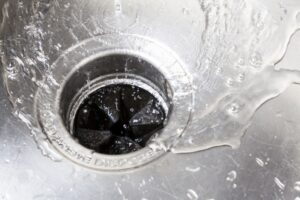 If we asked you what the #1 most common and annoying plumbing problem is, what would your answer be? Our answer would be a drain clog—that’s what we hear from most of our customers. Just about everyone has dealt with a clogged up or slow drain at some point in their home—and we certainly deal with a lot of drain clogs in the homes we serve.
If we asked you what the #1 most common and annoying plumbing problem is, what would your answer be? Our answer would be a drain clog—that’s what we hear from most of our customers. Just about everyone has dealt with a clogged up or slow drain at some point in their home—and we certainly deal with a lot of drain clogs in the homes we serve.
We’d like to help you avoid this! If we could help you have as few plumbing problems as possible, then we’ve done our job right. Read on as we uncover some of the preventive steps you can start taking today.
Use Drain Screens and Covers
Things like hair, soap scum, and even objects that accidentally get knocked down into the drains are among the most frequent sources of drain clogs. You can stop most of these from going down the drains by putting in drain screens and covers.
Drain covers are sold at most hardware and home improvement stores, and are very easy to place over the drain in order to strain out unwanted particles. Drain screens do need a little more installation, and you might want to work with a professional plumber to have one put in. You’ll also need to remove a drain screen every once in a while to clean it off.
Keep FOG Out Of Your Kitchen Sink
FOG stands for “fats, oils, and grease” and these are the byproducts of cooking. They’re also the enemy of your kitchen sink drain. They are liquid when hot, but they cool down and congeal as they cool off from the air of your drain vents. Once they congeal, they stick to the sides of your pipe interior, and they’re very hard to remove.
We suggest that you pour your FOG from cooking into a separate container and put it in the trash instead of the drains.
Run Hot Water Down the Drain After Every Use
This is a tool to help deal with FOG in the kitchen or even soap in your bathroom and shower. Hot water breaks apart particles, allowing water to flow easier down the drains and flush products out with the wastewater. You don’t have to run a lot or wastewater, but just running some hot water for 20 seconds or so can really help things along.
Schedule Routine Professional Drain Cleaning
Drain cleaning isn’t just a service to eliminate a current clog or backup. It’s also a preventative tool to stop future clogs. Plumbing professionals use a powerful hydro-jetting tool to scour out the drainpipe walls to rid them of the buildup that can occur from hair, FOG, limescale, soap scum, and much more. The hydro-jetting process leaves your pipe walls so smooth that it is hard for the buildup to start again, and you can enjoy your plumbing without clogs for a long time!
Please don’t hesitate to reach out to our team with any drain cleaning or plumbing concerns you have.
For quality drain cleaning in St. Louis, MO, contact Performance Plumbing today!
